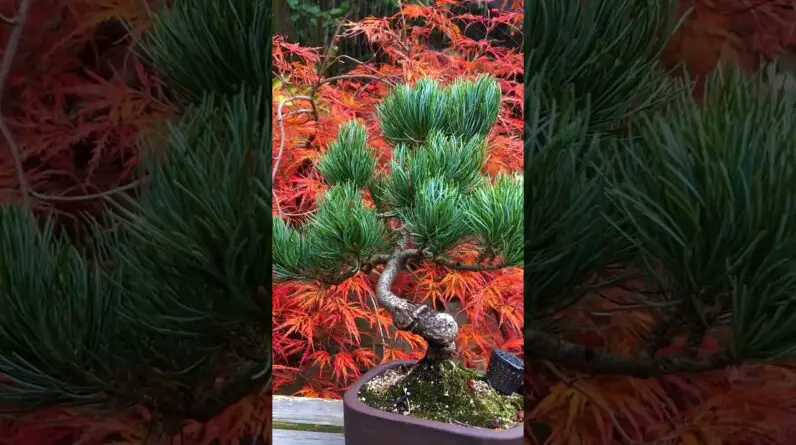Welcome to The Bonsai Zone! In this first installment of “Exploring My Larch Forest and Porsche 911” series, we’re diving into the stunning world of bonsai and what it takes to maintain a thriving larch forest. But that’s not all – we’ll also be taking a closer look at the iconic Porsche 911 and its relationship with the natural beauty of our surroundings. So come along for the ride as we explore the intersection of luxury and nature in May 2023.
Exploring My Larch Forest and Porsche 911: Part 1 in The Bonsai Zone – May 2023
Introduction
Hello everyone, and welcome to The Bonsai Zone. This month we have some exciting news to share. Our larch forest has been growing really well, putting on two flushes of growth this spring. We are thrilled with its progress and want to share with you our pruning techniques and how we plan to get the trees ready for their third flush of growth. Additionally, we will discuss the progress of restoring our 1970 Porsche 911 Targa. So, let’s dive in!
Pruning will keep the trees to size and shape, allowing light into the interior of the forest and the lower branches.
Pruning is an essential part of keeping any bonsai healthy and in shape. It creates an artificial environment in which the tree can thrive and prevents the tree from becoming overgrown. In our larch forest, we use pruning to shape and control the size of the trees. We want them to grow in a way that looks natural and aesthetically pleasing.
Our focus when pruning the larch forest will be to keep the size and shape of the trees under control while allowing light into the interior of the forest and the lower branches. If we do not prune, the tree will continue to grow uncontrolled, and branches and leaves will die off due to a lack of light. This will eventually result in the tree dying. Therefore, pruning will help maintain the health of the larch forest.
Needle thinning will be done to get the trees ready for the third flush of growth.
As we mentioned earlier, our larch forest has grown really well this spring, putting on two flushes of growth. To get the trees ready for their third flush of growth, we will be thinning out the needles. This technique helps to increase light penetration, which is essential for the lower branches to develop.
Each needle has a dormant bud, some more visible than others. These buds will be used as a guide when pruning the needles. This will help to maintain the delicate balance of the bonsai and, most importantly, the health of the tree.
Larch forest growth has resulted in the moss growing too, which will also need scissor pruning.
Our larch forest is growing so well that it has resulted in the moss growing excessively too. This is not ideal since it can block the light and cause the moss to rot, damaging the health and appearance of the trees.
To deal with the moss, we will use scissor pruning, removing the dead, yellow, and overgrown parts. This will help maintain the health and appearance of the moss on the trees.
Severe pruning can be done in the apex, while there should be less and less pruning going down the tree because of less vigor.
When dealing with a bonsai forest, severe pruning should be done in the apex. This helps to balance the vigor of the tree and ensure that the height is maintained. On the other hand, as we move down the tree, there should be less and less pruning because of less vigor.
This pruning technique is essential for maintaining a healthy and balanced bonsai forest. However, it is important to do it professionally to avoid damaging the health of the trees.
Needles will be thinned out to allow light to get down to the lower branches.
Thinning out needles is an effective technique for letting light penetrate through to the lower branches of the tree. To achieve this, we will remove some of the needles that are not performing well and allowing more light to pass through the canopy. This process is essential for maintaining the health of the tree and ensuring that it thrives.
Congested areas will be dealt with by plucking the lower needles.
In the bonsai world, plucking is a technique used to remove needles in congested areas. This technique is used to help expose the branches below for better light exposure and to avoid overcrowding and competition.
Plucking the lower needles will help the tree to grow more efficiently and prevent the needles from dying off.
Bonsai techniques are employed in keeping the forest small, compact, healthy, and good-looking.
Bonsai techniques are employed in keeping the forest small, compact, healthy, and good-looking. As we carry out the pruning techniques in our larch forest, we ensure that the bonsai is small and compact, ensuring that the tree’s health is maintained while keeping it visually pleasing.
Restoring the 1970 Porsche 911 Targa
In addition to our larch forest, we are also restoring a 1970 Porsche 911 Targa. We picked this car because of its classic design and incredible performance, making it an essential part of our collection.
Our plan is to restore the car to its original state. This involves removing rust spots, connecting and welding different parts of the car that are broken or damaged, and painting it to restore its original shine.
Our goal for next month is to have the Porsche 911 Targa running and looking like new.
Conclusion
That’s it for this month’s edition of The Bonsai Zone. We hope you found our article informative and that it has given you some insights into larch forest care and Porsche restoration. It is essential to keep our trees and cars in top condition to maintain their beauty and longevity.
FAQs
- Is pruning necessary for bonsai trees, and why?
- What is the difference between severe pruning and thinning to shape a bonsai tree?
- Why is moss removal essential for the health of a bonsai forest?
- Why is plucking an important bonsai technique?
- How can I keep my bonsai trees small and compact?








